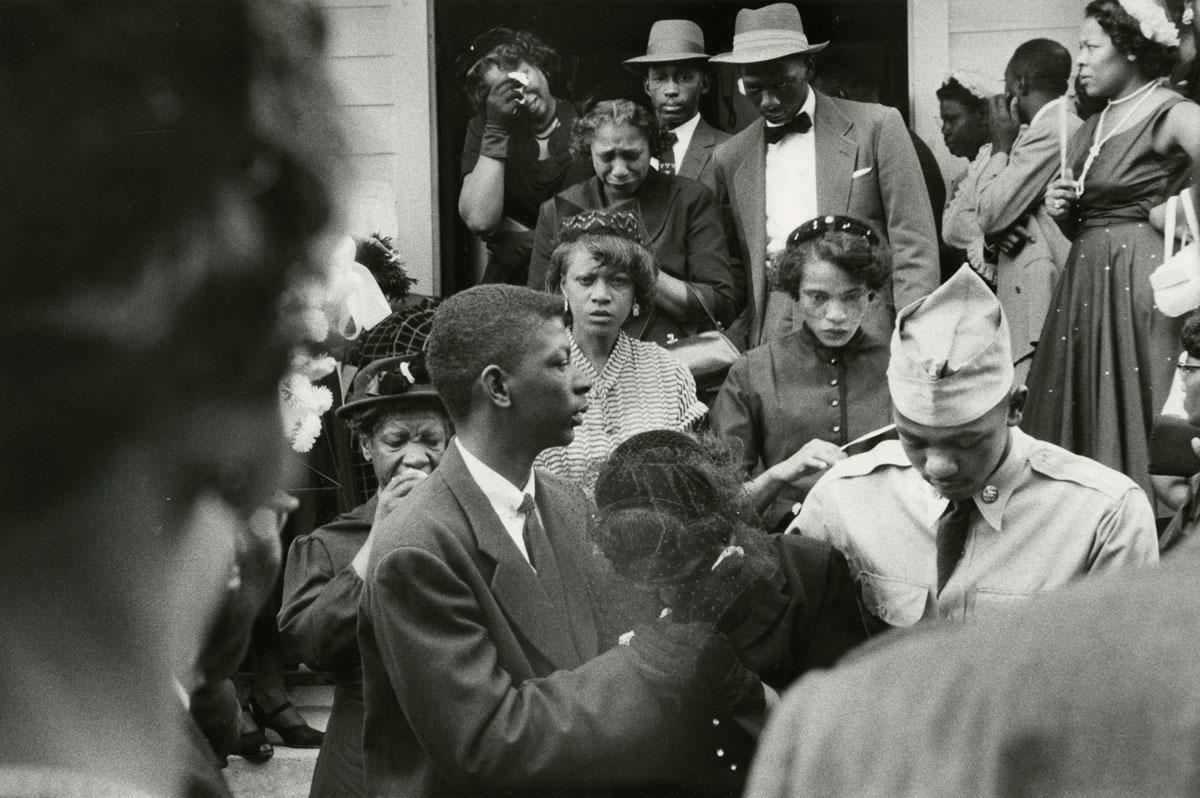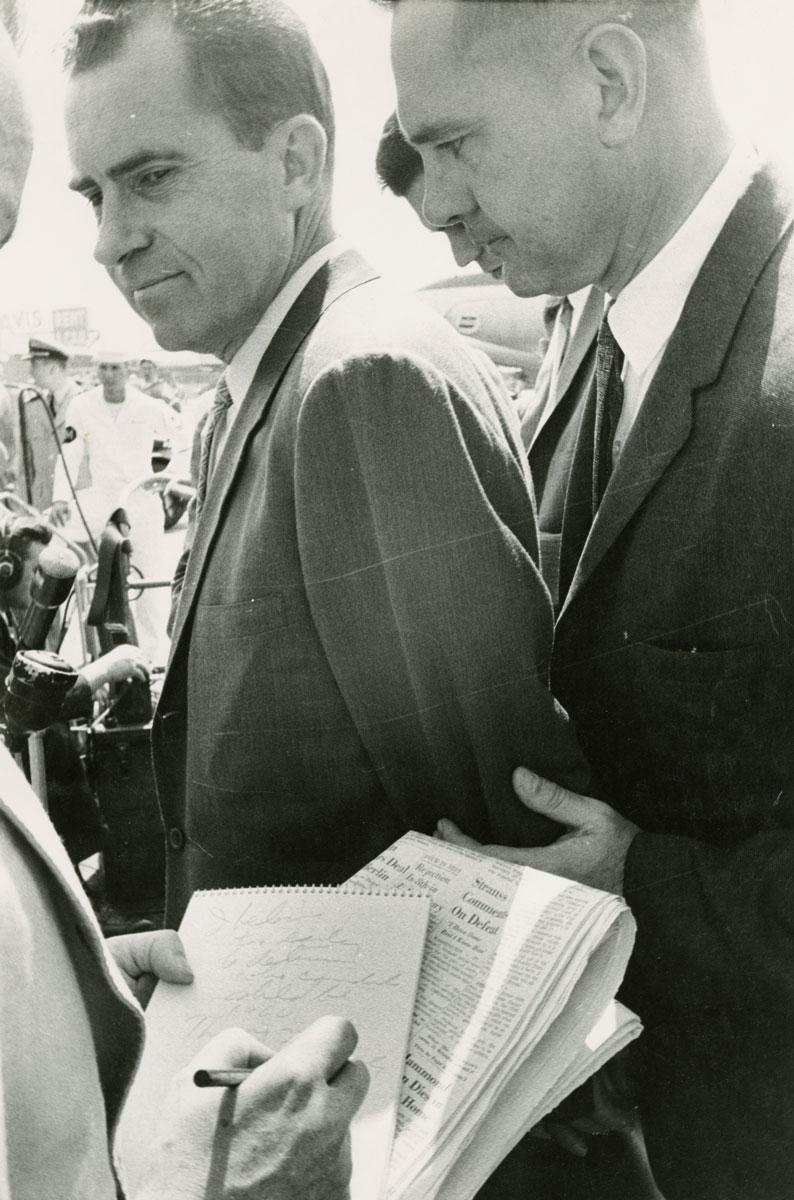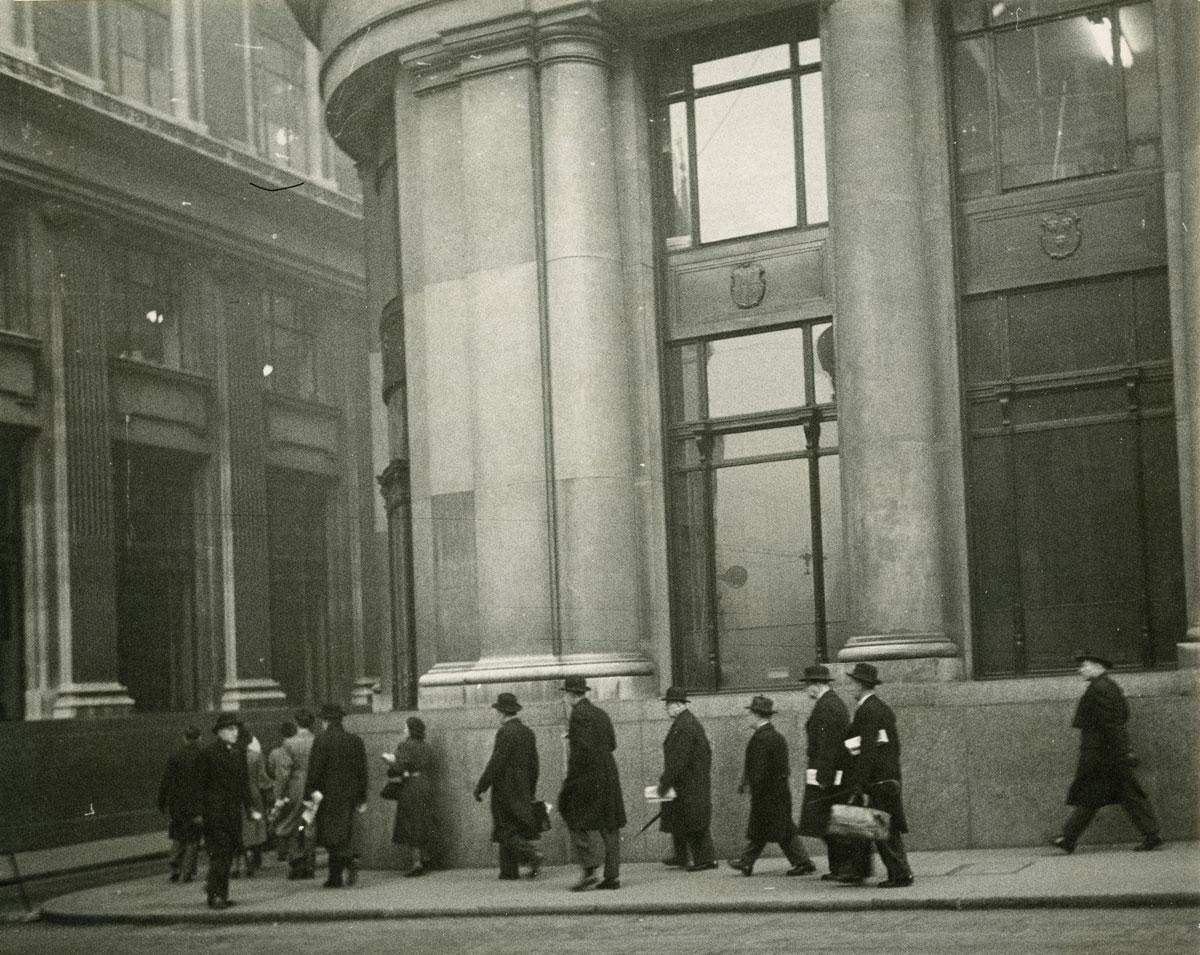The images in The Americans are the work of a photographer who is both a seer and a medium, in two senses of the term—medium as in the vehicle through which the photographic object itself is made, and medium as in clairvoyant, as if Frank has focused his Leica not only on the scene before him, but onto some beyond, seeing more than what the eye alone can see. “He sucked a sad poem right out of America onto film,” writes Kerouac. Much of the credit for Frank’s poetic sensibility has often been given to the influence of Walker Evans’ lyric vernacular on display in American Photographs, the 1938 photobook that accompanied Evans’ exhibition at the Metropolitan Museum of Art. What’s fascinating about this exhibition is that the images demonstrate the accrual of influence, Evans’ among them, but also reflecting Frank’s Swiss training and frequent travel.
Born in Zurich in 1924, Frank trained as a commercial photographer. Swiss photography was defined in part by magazine and newspaper reportage and by modernism, as practiced by the New Objective German photographer Albert Renger-Patzsch and the abstract experimentalism of Hungarian László Moholy-Nagy. It was during his apprenticeship that Frank learned from advertising photographer Michael Wolgensinger to organize his contact prints by theme. It was an approach that would be foundational to the thematic development of his own work and to the way he sequenced and selected images.
Frank was heavily influenced by modernist Swiss photobooks, particularly Jakob Tuggener’s Fabrik: Ein Bildepos der Technik [Factory: A Pictorial Epic of Technology], seventy-two images printed in photogravure, whose sequencing was inspired by film and photomontage, and that contemplated the human damage inflicted by technology. Frank’s first photographic book, 40 Fotos, made in 1946, bears the influences of both commercial and modernist photography.
He arrived in the United States in 1947, already keyed into the visual and aesthetic potential of sequencing photographs that, presented across the page spread of a book or presented by the turn of the page, could work almost cinematically. In New York, Frank worked as a magazine photographer for publications like Harper’s Bazaar. But he was in search of something else, a way of photographing that ran counter to the sharp, “decisive moment” aesthetic of Henri Cartier-Bresson and the formulaic picture stories of Life magazine. Frank also met concentric circles of artists and photographers, among them Edward Steichen and Walker Evans; painters Willem de Kooning and Mark Rothko; a circle of Beat writers including Kerouac and Allen Ginsberg; and Alexey Brodovitch, the Russian-born photographer and art director at Harper’s Bazaar. Brodovitch encouraged Frank to take more photographic risks and persuaded him to trade his Rolleiflex for a 35mm Leica.































